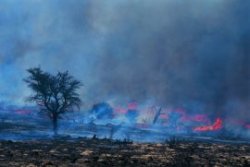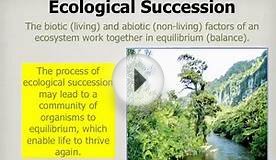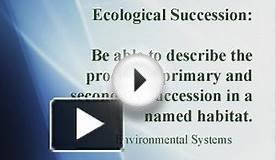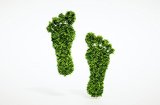Describe ecological succession
 Forest fires cause secondary successions in affected ecosystems.
Forest fires cause secondary successions in affected ecosystems.
Ecological succession is the change that an ecosystem experiences over time. It is a natural process that occurs gradually as plants grow in an area, animals move in and the environment changes. Factors that can influence the stages of ecological succession include the availability of seeds, weather conditions, human activity and competition within an ecosystem.
Primary Succession
The term primary succession is used to describe the type of ecological succession which begins in an area that doesn’t have any soil, plants or animal life. Such areas include sand dunes, a rock face newly exposed by a quarry, or cooled lava flows. During the initial stage of primary succession, pioneer species - simple organisms and plants that can live in a barren environment - colonize an area. Examples of this include lichens and lithotrophic bacteria that grow on rocks. Lichens help break down rock and form soil. As pioneer species grow in population, they make a once-uninhabitable area less hostile for other types of plant and animal life. As an ecosystem develops, it undergoes natural changes in response to minor events like extreme weather or fluctuating populations of species.
Stages
The stages of ecological succession can be seen in an example of successive dominant plant life in a deciduous forest. First exposed rocks are populated by lichens, which help establish soil for other plant life. Mosses, grasses and weeds move in, followed by herbaceous plants, and then shrubs. A young forest is established with the first trees, for example, tulip tree. White oak and hickory characterize the maturing forest. Finally, beech and sugar maple populate the climax forest.
Secondary Succession
Secondary succession is a type of ecological succession which occurs in an established ecosystem in the wake of an event that disrupts and changes the environment. Events can include forest fires, hurricanes, volcanic eruptions or deforestation. Because soil is already present, the area doesn’t require pioneer species. Seeds buried in the soil and undisturbed root systems help regenerate plant life in an affected area. An example of secondary succession is the replenishment of wildlife that populated Mount Saint Helens in the state of Washington after the volcano erupted in 1980.


|
Is your lunch causing global warming? Cars and factories are major sources of greenhouse gas emissions that are heating up the planet. But what you ... An article from: New York Times Upfront Book (Scholastic, Inc.) |

|
Wallmonkeys Ecological Footprint Symbol Peel and Stick Wall Decals (24 in W x 16 in H) Home (Wallmonkeys)
|